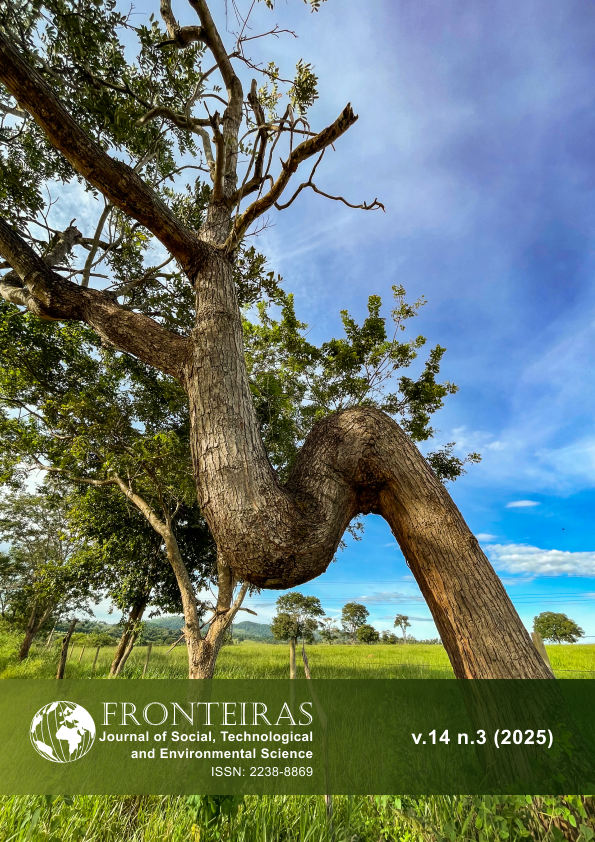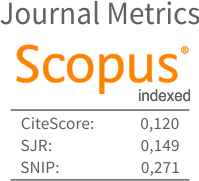Restoration of degraded areas in the Atlantic Forest: 23 years of ecological restoration and agroforestry in the Estância São Lucas, Guaçuí – ES
DOI:
https://doi.org/10.21664/2238-8869.2025v14i3.7988Keywords:
Atlantic Forest, soil and water conservation, restoration methods, payment for environmental servicesAbstract
The restoration of degraded areas is crucial to reversing the environmental impacts of deforestation and agricultural expansion, which harm biodiversity and water resources. This study examined restoration processes at Estância São Lucas (Guaçuí-ES) over 23 years (2001-2024). Methods included field visits, analysis of satellite and drone imagery, and compilation of historical and technical data to assess environmental features, agroecological practices, and changes in vegetation cover. Restoration practices included direct seedling planting, agroforestry systems, seed broadcasting (“muvuca de sementes”), environmental enrichment, and natural regeneration, covering 16.4 hectares out of the property’s total 36.8 hectares. Geospatial analysis showed a marked increase in vegetation density and the establishment of a stable ecosystem from 2018 onward. The coffee-banana-native tree agroforestry consortium enabled integration of agricultural production with ecological restoration. Positive outcomes were noted in the water regime (greater water volume and groundwater recharge) and biodiversity, with the return of native fauna (guan, armadillos, otters, toucans) and the reintroduction of 858 animals between 2018 and 2024. Remaining challenges include seedling scarcity, control of invasive exotic species (Brachiaria grass), and fence maintenance. Community involvement and support from institutions such as the Reflorestar program and SOS Mata Atlântica were critical. Integrated restoration practices, ongoing monitoring, and community engagement can recover degraded lands and serve as models for sustainable initiatives.
References
Assis Junior, Wellington, e Rafael Kiyotani. 2024. “Projeto de Restauração de Áreas Degradadas: Uma Análise de Caso da Região de Atlântica Ville (SP), numa área fictícia para ensaio metodológico”. Unisanta BioScience 13 (4): 263–77. https://doi.org/10.5281/zenodo.14247317.
Benini, R., P. Santana, M. Borgo, V. Girão, M. Campos, F. Klein, e O. P. Kummer. 2016. “Manual de restauração da vegetação nativa, Alto Teles Pires, MT”. The Nature Conservancy. https://www.nature.org/media/brasil/manual-restauracao-mt.pdf.
Caminhos da Semente. 2025. “Rede de Restauração Ecológica Com Foco Em Semeadura Direta”. Caminhos Da Semente. 2025. https://caminhosdasemente.org.br/.
Carneiro, Magda Silva, Bruno Roberto Ribeiro, Caroline Cambraia Furtado Campos, Hisaias de Souza Almeida, Matheus Lima de Araujo, Flavio Antônio Maës dos Santos, e Flávio Nunes Ramos. 2023. “Small Forest Fragments and Their Importance for Conservation of Tree Communities in Atlantic Semideciduous Forest”. Iheringia, Série Botânica. 78 (outubro). https://doi.org/10.21826/2446-82312023v78e2023019.
CEREIAS. 2025. “Sobre o CEREIAS”. Centro de Reintrodução de Animais Selvagens (blog). 2025. http://www.cereias.org.br/p/sobre-o-cereias.html.
Crouzeilles, Renato, Mariana M. Vale, Rui Cerqueira, e Carlos E. V. Grelle. 2013. “Increasing Strict Protection through Protected Areas on Brazilian Private Lands”. Environmental Conservation 40 (3): 209–10. https://doi.org/10.1017/S0376892912000367.
Hiriart, Tello Valle, e J. Carlos. 2017. “Socio-legal assessment of the establishment of Natural Heritage Private Reserves (RPPNs) in seven municipalities of Rio de Janeiro State, Brazil”. Em . https://www.semanticscholar.org/paper/Socio-legal-assessment-of-the-establishment-of-in-Hiriart-Carlos/4aca164991d1d8bd8a879e69dba7222efd4da493?utm_source=consensus.
INCAPER. 2023. “Programa de Assistência Técnica e Extensão Rural │Guaçuí”. Programa de Assistência Técnica e Extensão Rural. Vitória-ES: Instituto Capixaba de Pesquisa e Extensão Rural.
Lacerda, Dinnie Michelle Assunção, e Paulo Sérgio de Figueiredo. 2009. “Restauração de matas ciliares do rio Mearim no município de Barra do Corda-MA: seleção de espécies e comparação de metodologias de reflorestamento”. Acta Amazonica 39 (2): 295–303. https://doi.org/10.1590/S0044-59672009000200008.
Microsoft. 2021. “Microsoft Office Professional Plus 2021”. Microsoft.
Perdomo-González, Adolfo, Raquel Pérez-Reverón, Marta Goberna, Milagros León-Barrios, Manuel Fernández-López, Pablo J. Villadas, J. Alfredo Reyes-Betancort, e Francisco J. Díaz-Peña. 2023. “How harmful are exotic plantations for soils and its microbiome? A case study in an arid island”. Science of The Total Environment 879 (junho):163030. https://doi.org/10.1016/j.scitotenv.2023.163030.
Pretty, Jules. 2018. “Intensification for redesigned and sustainable agricultural systems”. Science 362 (6417): eaav0294. https://doi.org/10.1126/science.aav0294.
Rigacci, Eduardo Delgado Britez, Natalia Dantas Paes, Gabriel Moreira Félix, e Wesley Rodrigues Silva. 2021. “The Resilient Frugivorous Fauna of an Urban Forest Fragment and Its Potential Role in Vegetation Enrichment”. Urban Ecosystems 24 (5): 943–58. https://doi.org/10.1007/s11252-020-01080-5.
SEAMA-ES. 2024. “SEAMA - Programa Reflorestar”. Secretaria do Meio Ambiente e Recursos Hídricos. 2024. https://seama.es.gov.br/programa-reflorestar.
Sivisaca, Deicy Carolina Lozano, Celso Anibal Yaguana Puglla, José Raimundo de Souza Passos, Renata Cristina Batista Fonseca, Antonio Ganga, Gian Franco Capra, e Iraê Amaral Guerrini. 2024. “Atlantic Forest Regeneration Dynamics Following Human Disturbance Cessation in Brazil”. Environments 11 (11): 243. https://doi.org/10.3390/environments11110243.
Spiegal, S, B T Bestelmeyer, D W Archer, D J Augustine, E H Boughton, R K Boughton, M A Cavigelli, et al. 2018. “Evaluating Strategies for Sustainable Intensification of US Agriculture through the Long-Term Agroecosystem Research Network”. Environmental Research Letters 13 (3): 034031. https://doi.org/10.1088/1748-9326/aaa779.
Staporn, Duriya, Dokrak Marod, Jetsada Wongprom, e Sapit Diloksumpun. 2022. “Drivers of Native Species Regeneration in the Process of Restoring a Dry Evergreen Forest from Exotic Tree Plantations in Northeastern Thailand”. Forests 13 (8): 1321. https://doi.org/10.3390/f13081321.
Downloads
Published
How to Cite
Issue
Section
License
Copyright (c) 2025 Luana Soares Egidio, Maurício Novaes Souza

This work is licensed under a Creative Commons Attribution-NonCommercial 4.0 International License.
This journal offers immediate free access to its content, following the principle that providing free scientific knowledge to the public, we provides greater global democratization of knowledge.
As of the publication in the journal the authors have copyright and publication rights of their articles without restrictions.
The Revista Fronteiras: Journal of Social, Technological and Environmental Science follows the legal precepts of the Creative Commons - Attribution-NonCommercial-ShareAlike 4.0 International. 


